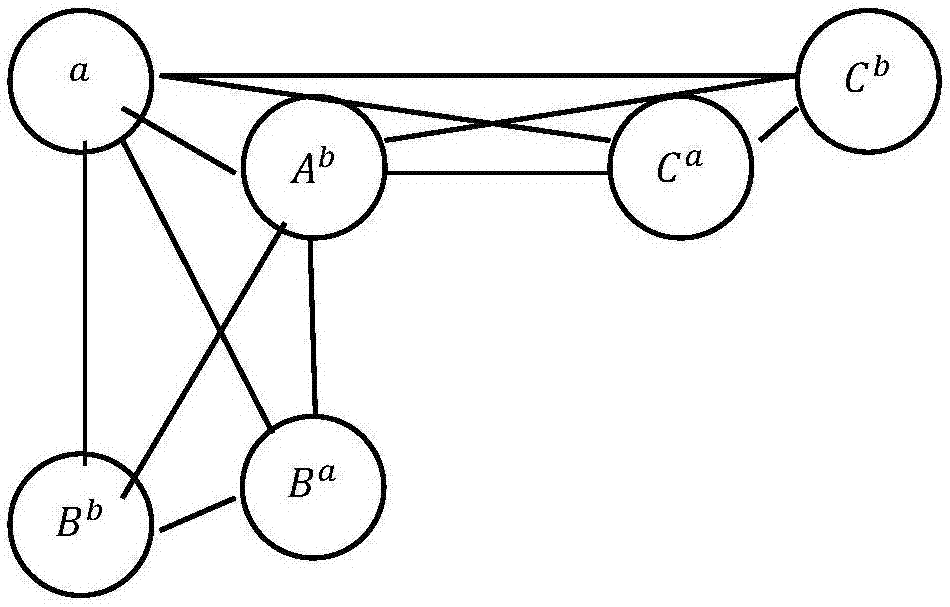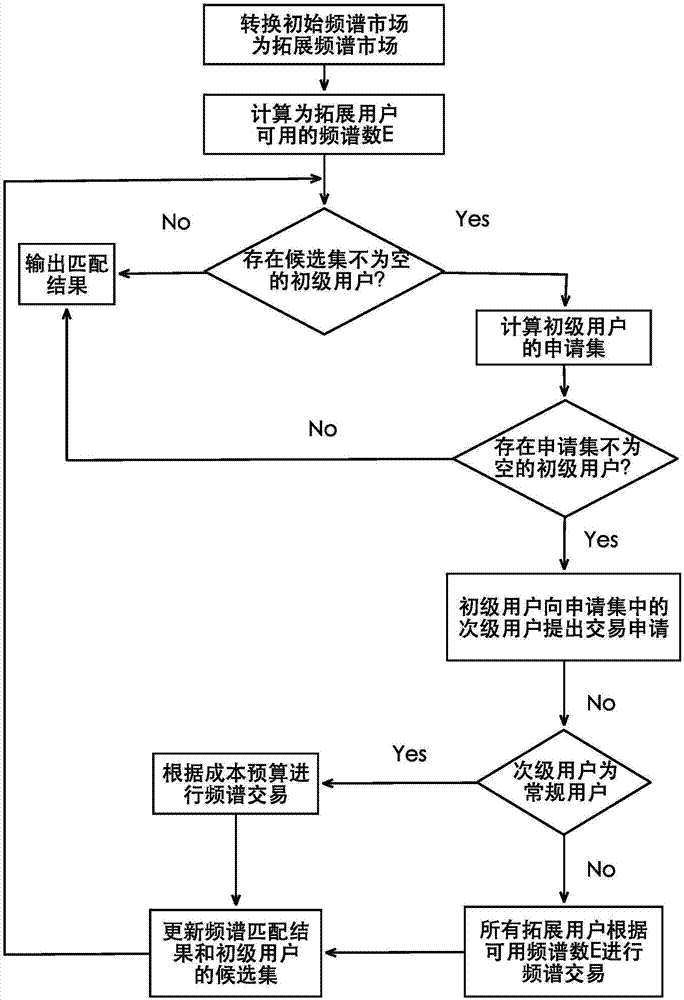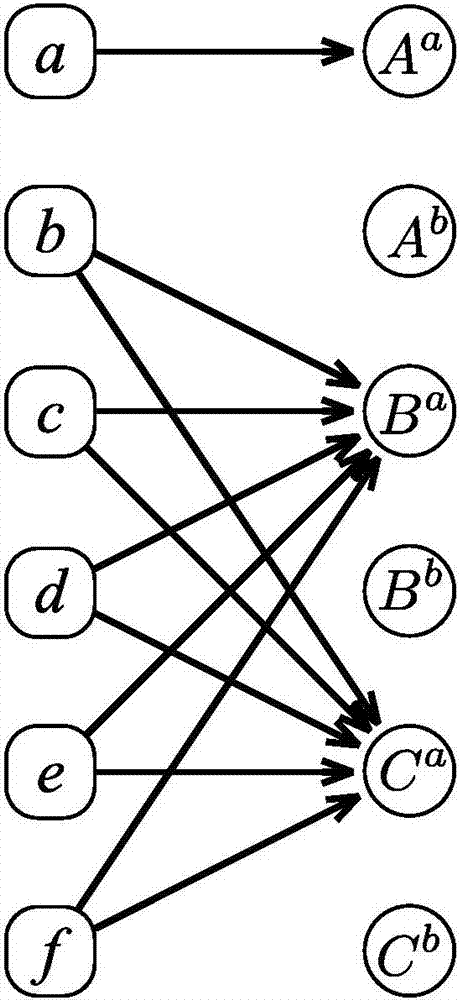Stable matching algorithm-based and demand lower limit-guaranteed spectrum allocation method
A matching algorithm and spectrum allocation technology, applied in the field of computer networks, can solve the problems that the algorithm cannot be directly used to solve the problem of spectrum matching and cannot meet the lower limit of demand.
- Summary
- Abstract
- Description
- Claims
- Application Information
AI Technical Summary
Problems solved by technology
Method used
Image
Examples
Embodiment specific Embodiment approach
[0063] According to the buyer's bid to the seller, the preference relationship between the buyer and the seller can be established as follows:
[0064] a>> A e>> A b>> A f>> A c>> A d
[0065] c>> B e>> B f>> B d>> B b>> B a
[0066] f>> C c>> C d>> C b>> C e>> C a
[0067] Step 3, calculate the number of free spectrum θ, the specific steps are as follows: (1) For each requirement, the lower limit is p c The buyer s, creates p c a virtual node. (2) Each newly created virtual node inherits all the interference relations of the original node, that is, inherits the edges of the original node in all original interference graphs. (3) Create conflicting edges between every two virtual nodes of the same original node. (4) For the interference map obtained according to steps (1)(2)(3), use the Welch Powell method to calculate the minimum number of colors that can cover the entire G coloring, θ=M-coloring, where M is the individual number of all selle...
PUM
 Login to View More
Login to View More Abstract
Description
Claims
Application Information
 Login to View More
Login to View More - R&D
- Intellectual Property
- Life Sciences
- Materials
- Tech Scout
- Unparalleled Data Quality
- Higher Quality Content
- 60% Fewer Hallucinations
Browse by: Latest US Patents, China's latest patents, Technical Efficacy Thesaurus, Application Domain, Technology Topic, Popular Technical Reports.
© 2025 PatSnap. All rights reserved.Legal|Privacy policy|Modern Slavery Act Transparency Statement|Sitemap|About US| Contact US: help@patsnap.com



